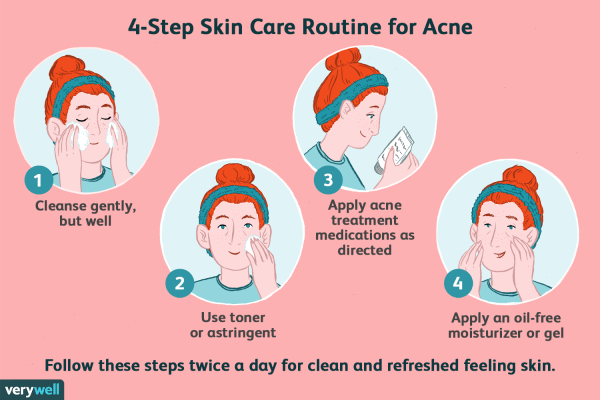| Managing acne breakouts requires a holistic approach addressing all acne-prone areas, including the face, back, chest, and shoulders. This involves a consistent skincare routine with gentle cleansers, non-comedogenic moisturizers, and targeted treatments like benzoyl peroxide or salicylic acid. Regular exfoliation helps prevent clogged pores, while maintaining a healthy diet and managing stress can also contribute to clearer skin. For persistent or severe acne, consulting a dermatologist is crucial for personalized treatment plans potentially including prescription medications like retinoids or antibiotics. Finally, avoiding harsh scrubbing and picking at blemishes is vital to prevent scarring and inflammation. Managing acne breakouts requires a holistic approach, addressing all acne-prone areas of the body. This isn't just about the face; acne can appear on the back, chest, shoulders, and even other areas. A successful strategy involves consistent cleansing, targeted treatments, and lifestyle adjustments. 1. Cleansing:- Gentle Cleansing: Wash your face (and other acne-prone areas) twice daily with a gentle, non-comedogenic cleanser. Avoid harsh soaps or scrubbing, which can irritate the skin and worsen acne. Look for cleansers containing salicylic acid or benzoyl peroxide for their acne-fighting properties.
- Body Wash: Use a body wash formulated for acne-prone skin on your back, chest, and shoulders. Similar to facial cleansers, look for salicylic acid or benzoyl peroxide.
- Thorough Rinsing: Ensure you rinse all cleanser completely to prevent residue from clogging pores.
2. Targeted Treatments:- Topical Treatments: Over-the-counter (OTC) treatments containing benzoyl peroxide or salicylic acid are effective for mild to moderate acne. Benzoyl peroxide kills acne-causing bacteria, while salicylic acid helps unclog pores. Follow the product instructions carefully.
- Prescription Medications: For moderate to severe acne, a dermatologist can prescribe stronger topical treatments like retinoids (e.g., tretinoin, adapalene), antibiotics, or a combination therapy. Retinoids increase cell turnover, preventing clogged pores. Antibiotics fight bacterial infection.
- Oral Medications: In severe cases, a dermatologist might prescribe oral antibiotics or isotretinoin (Accutane), a powerful medication with potential side effects that require close monitoring.
3. Lifestyle Adjustments:- Diet: While a specific diet doesn't cure acne, a healthy diet rich in fruits, vegetables, and whole grains can contribute to overall skin health. Some studies suggest limiting dairy and high-glycemic foods might be beneficial for some individuals.
- Stress Management: Stress can exacerbate acne. Practice stress-reducing techniques like exercise, yoga, meditation, or spending time in nature.
- Hygiene: Keep your hair clean and away from your face to prevent oil and dirt from clogging pores. Change pillowcases frequently. Avoid touching your face frequently.
- Sun Protection: Use a non-comedogenic sunscreen with an SPF of 30 or higher to protect your skin from sun damage, which can worsen acne scarring.
4. When to See a Dermatologist:- If your acne is severe or doesn't respond to OTC treatments.
- If you have painful nodules or cysts.
- If you have acne scarring.
- If you experience significant side effects from OTC or prescription medications.
It's crucial to be patient and consistent with your acne treatment plan. Results may take several weeks or even months to become noticeable. Working with a dermatologist can help you develop a personalized treatment plan that addresses your specific needs and skin type. They can also help diagnose any underlying conditions contributing to your acne. 
Tags: Acne Treatment Combination Therapy Dermatology Healthy Skin Skin Care Skin Cleansing Topical Medication  
|  1,388
1,388  0
0  0
0  3224
3224 